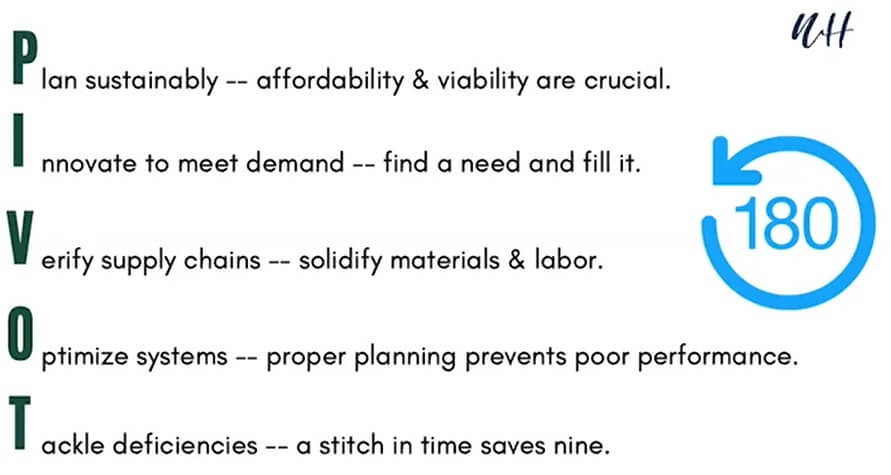Want a heads up when a new story drops? Subscribe here.
This fall’s edition of the Digital Marketing World Forum series took place as a ‘virtual conference’. Given the social distancing and quarantine measures taken worldwide under the COVID-19 crisis, the DMWF organizers decided to grant all attendees free access to the two-day virtual conference specifically targeted towards senior marketing leaders.
The virtual format allowed the worldwide marketing community to enjoy strategic advice, insights and guidance in the field. On-demand and live session formats offered attendees flexibility to both engage with speakers in real-life conversations and to watch content at their own pace.
With 37 total sessions within the two-day marketing marathon, one was able to catch up with the latest trends on:
- How to build effective social media marketing campaigns at Facebook, TikTok, Youtube, Instagram;
- How to draft up a data-driven content strategy;
- How to engage Gen Z and Millenials with a relevant marketing campaign;
- Managing a thriving business in times of COVID;
- How testing and experimenting is the right key towards eliminating the bias of the subjective point of view;
- How empathy and compassion fits in the marketing promotion equation;
- The future of shopping, and many, many more.
We at Socialfix Media, enjoyed the September edition of the Digital Marketing World Forum, and are eager to share some of the most valuable insights discussed by its speakers.
The first-day sessions include 20 titles. Further down in this post, we are to touch upon each of them accordingly. To navigate directly to a specific topic or a speaker’s presentation, please click the session title in the table of contents below.
Table of Contents
Integrating Society Issues in Marketing Campaigns & Remaining Authentic – Flavilla Fongang
Flavilla Fongang is a Brand Strategist, International Keynote Speaker, BBC Brand Advisor, and Founder of a working community called Black Women in Tech, a podcast named Tech Brains Talk Host, and an award-winning branding and marketing agency: 3 Colors Rule.
Flavilla did a very inspirational opening of the DMWF by giving the first-rate tip on how to engage your audience:
“Choose what you stand for”
She explains that the one definite way towards staying on track and keeping a clear idea of your marketing campaign is to define your corporate social responsibility agenda.
Often corporate social responsibility agenda will protect you from negative emotional response and backlash. By outlining your CSR, Flavilla explains, that you’d be able to stay focused in your communications with your audience. You’d successfully manage to create brand authenticity that will eventually result in satisfied customers and brand advocates, which will respectfully decrease your client acquisition costs.
“We love brands because of the things they do that we don’t expect them to do”
Again it all comes down not only to promises and creative competitive messages, but mainly to how we act in our real-life interactions with our customers: how we overperform instead of overpromote.
Flavilla lists the four main stages of effective marketing campaigns with integrated society issues:
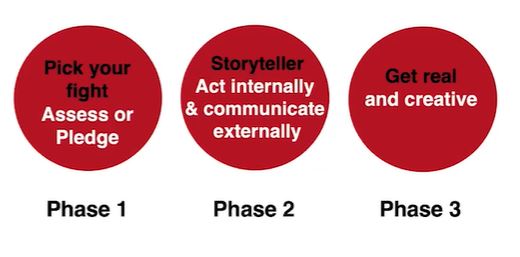
With the first stage you should decide on a cause that is consistent with your business, that is relevant to your company culture, and that is within your scope of abilities to influence and contribute to.
The second phase covers how you share with your audience what you stand for. Focus on inspiration and welcome them to join you on your journey towards reaching a common social goal. Open your heart and become a true storyteller, Flavilla encourages, put yourself out there let your audience know you for the cause you live by.
The third stage would consist of you standing up for your words with actions.
And finally the 4th thing to keep in mind would be to:
“Focus on impact KPIs instead of marketing KPIs”
Monitor how your company CSR agenda changes behavior. Don’t overprioritize profits, think of what is the impact that your business has on society instead.
Best Practices for a Compelling and Engaging Worldwide Social Strategy during COVID Times – Gabriela Torres, BBC World Service
Gabriella Torres is the Head of Social Media at BBC World Service. With 188 social media accounts in their portfolio and 42 different teams worldwide they create and implement strategies to generate growth, to empower, innovate and lead.
Gabriella shares a straightforward process of creating a campaign:
- Defining audience’s needs. In times of COVID-19 those would mainly revolve around:
- How-To guides;
- Story-Ideas bank
- Pandemic-related templates in 22 languages;
- Current content offer – e.g. what is the current content supply and how better content could be offered to the audience’s attention;
- Resources.
Among the standard ways to verify that the campaign is on track Gabriella shares that they turn to:
- Google Analytics;
- SEO Insights;
- People’s comments.
The process of storytelling, engaging with the audience and thinking of innovative approach towards executing social media campaigns in times of COVID-19 proves to be very painstaking. Gabriella shares that her team has been very busy in the past 6 months. Nevertheless the lessons learned would allow for a better fine-tuning of the upcoming campaigns and would prove to be a solid foundation for the future strategies
How COVID is Affecting Consumer Conversations and What It Means for Your Brand – Cara Buscaglia, Talkwater
Talkwater positions itself as a Conversational Intelligence Platform. As a Lead of The Global Solutions Team, Cara defines the major trends during COVID times. The main takeaways according to her are:
- A shift in industry trends: The Pharma Industry marks a shift in information demand from topics like health care plans & prescription refills to protective equipment, hospital supplies and vaccines development;
- The difference between demographic groups: Millenials are most often discussing social good for the world, while parents are more involved with the anxiety of home schooling and with the worry of how the disease impacts their family;
- The boom of Beauty talks on all social media: especially TikTok and Youtube, that advocate for self-esteem and health;
- Education system’s getting affected – schools and colleagues should learn to message accordingly, questions like ‘How to keep the class engaged and interacting during online classes’, concerns like ‘Should you open full-time’ are all rising up in pandemic times;
- The e-sports and e-gaming rise should make all marketers update their advertising channels. Positioning their marketing messages in apps would help them reach the audience that before was easily accessible outdoors;
- Food Industry is reinventing their customer engagement techniques via issuing a lot of discounts, coupons and events like cheese or wine testing for instance. The food delivery is marking a huge spike in demand;
- The Financial and Banking sectors are marking a shift towards contactless payment and mobile payment;
All these trends that Cara lists are actually essential for brands to be aware of. Acknowledging those and integrating this data in their marketing strategy would help them draft the most relevant and adequate message for their target audience. They would be able to easily choose the best channel to convey that message and would also be able to fine tune their target audience if needed.
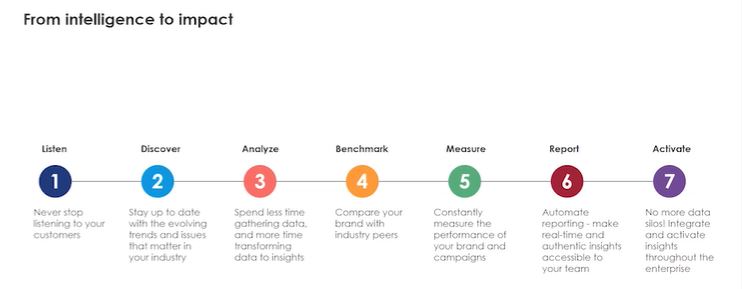
It is important to listen to your audience conversations in order to create a campaign that resonates with the consumer in sensitive times like these.
Diving B2B Demand in Times of COVID – Anna Villegas, NI.com
Anna Villegas is Vice President of Global Marketing at NI.com. Leaving Dell to join the NI.com team, Anna helped the company grow into an innovative and up-to-date service provider, the case study of which, she proudly shares with the DMWF audience.
The Message
Before the COVID-19 the idea was to start a marketing campaign that revolved around the notion of ‘failure’. However, the new lockdown situation seemed to have made the world grim enough, thus NI.com decided to re-engineer their initial plan and focus on conveying a message of ‘hope’ instead.
They decided that instead of going the conventional way and promoting products and services, they are to adopt a more innovative approach and highlight the company engineers.
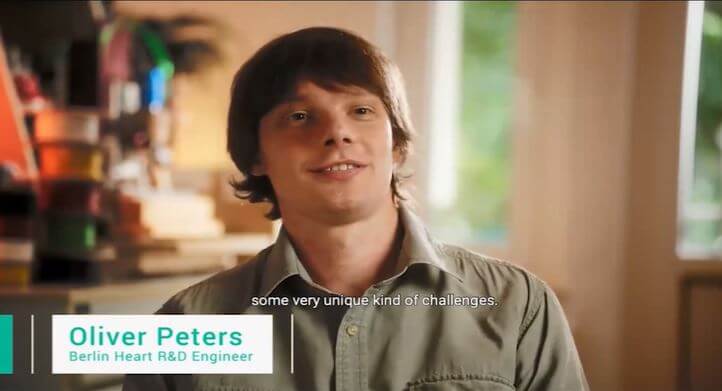
The Timing
The pandemic and worldwide lockdowns made it impossible to hang on to the original date set for the launch. And while Anna confesses that they were unwilling to postpone much the event, they had to reconsider their initial plan and delay it with two months.
The Big Event
The scheduled event had to shift in format. It had to be reorganized into a virtual one in order to reach the target audience.
The Operations
Every process was to be updated to suit the new challenges of the business environment.
The outcome of the Hope for the Next Generation campaign proved to be fascinating. In terms of revenue, new customers acquired, as well as savings – the results actually surpassed the forecasted numbers.
The key takeaways that Anna shared with the DMWF attendees go as follows:
- You need to define who your agents of change are, because, as Anna explains, not everyone on your team will be daring enough. The agents of change won’t be afraid to take risks and will help the team go through times of uncertainty towards evolution;
- Learn to leverage external knowledge – keep in mind the experience and successful tactics of other brands and campaigns;
- Everything is on the table – no secret agendas should be lurking on the background;
- Dynamic process – employees of all levels in the company should cooperate in order to reach the desired results, including high management;
- Keep moving there are no perfect answers – regardless of the challenges one should stay away from perfectionism otherwise he is not to launch a single campaign in his life. It is important to seize the moment and make the best of the resources you have at your disposal.
Anna offered a really honest and detailed overview of an internal marketing campaign project and we are grateful for her heart-to-heart talk and inspiration.
Going Beyond Compliance: Top 3 Ways to Build Trust with Your Audience – Claire Feeney, OneTrust PreferenceChoice
Claire Feenley is an Offering & Product Manager at OneTrust PreferenceChoice. She helps customers build up their Privacy Program, guiding them how to use it as a branding opportunity to differentiate themselves and to promote brand transparency.
She goes over specific GDPR (Europe), CCPA (USA), PDPA (Thailand), LGPD (Brazil), and PDPB (India) legislations in order to lay the foundation of the Global Compliance challenge for marketing. She also goes over:
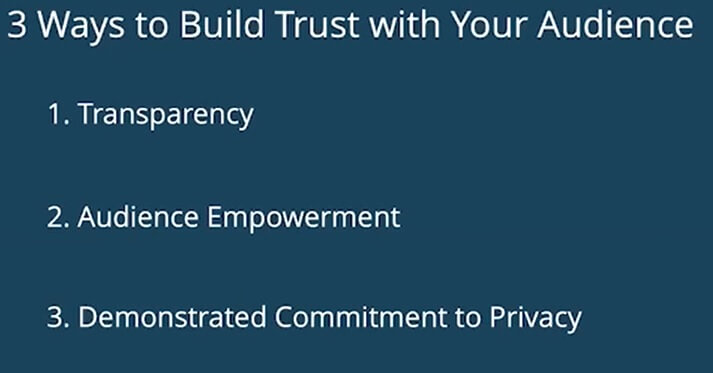
Cultivating a Brand That Cuts Through the Noise – Shannon Healy, Frontify
This session was really stimulating and could really trigger your creativity and inspiration. As a communication manager at Frontify, Shannon definitely has the gift of storytelling.
She motivates the content strategists by encouraging them:
“Today is not enough to just survive, you (your brand) needs to thrive”
As per her words “Sometimes stories spark action”. Shannon explains how by knowing your audience and by doing it your own way you have the potential to make it happen, to engage your target audience and to convert it for good.
Shannon further reveals the secret source of the successful marketing communication strategy: if you manage to convert your customers into storytellers you could have a winning competitive advantage. An example she lists under this piece of advice is Airbnb. Everyone knows how the site subscribers are true storytellers, who by sharing their personal experiences and impressions promote “brands”. They are “hooked on a feeling” as Shannon describes it, they are sharing a human experience that we can all relate to.
If you have a chance to go over this session, I strongly recommend that you do, Shannon has an ingenious approach towards addressing this topic and the way she conveys her ideas is quite captivating and skillful, you’d enjoy every minute of that presentation, as I did, for sure.
Her final slide reads:
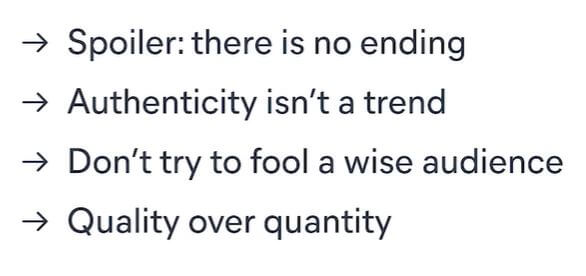
LIVE: Influencing Gen Z – How Brands can partner with TikTok Creators to Reach New Audiences – Tim Armoo, Fanbytes and Jake Sweet, TikTok creator
The first live session at the the DMWB conference obviously tackled a hot topic, namely drafting Social Media Campaigns on TikTok.
Tim Armoo, the CEO of Fanbytes talks about his project: the ByteHouse. The Bytehouse is the first UK-based TikTok Creator Creative. 6 of the most influential UK TikTokers gathered in one house just before the lockdown to create videos both for their own accounts as well as for the ByteHouse project.
The audiences have grown tons, the number of people and organizations interested in collaboration with the group skyrocketed as well. The TikTokers have even worked on pandemic-related projects assigned by the government. Thus the 6-member team instead of living on a roommate basis shaped as a real brand working out strategies and tweaking with people’s predispositions, creating needs and building up company images.
The 25-million people reach that the 6 TikTokers ensured could hardly be ignored.
Tim Armoo closes the popular dispute on which is the better short video creating and sharing platform, by simply acknowledging that those that are TikTok ‘veterans’ would hardly switch to IG Reels. He thinks that Reels is a good platform for verticals like fashion or beauty, however as it comes to real talents, TikTok would be the right place to find them.
Tim Armoo concludes that if one is to drive massive engagement then he should rely on TikTok. Of course TikTok content could be repurposed and re-published as ‘glossy ads’ to IG Reels or FB taking advantage of Facebook ad targeting features.
Both Tim and Jake are positive on the fact that growing TikTok audience from scratch is hard, thus you’d need to start with trend following. Once you get 100K subscribers the given TikToker is already ‘free’ to develop original stuff. And that’s what “Jake is really good at”, both speakers agree immediately.
Jake Sweet is one of the TikTok creators, working at the Bytehouse. He entertains 6.9 million followers and has a fine strategy to produce fresh and engaging content.
He has a notebook where he writes down every idea he has, regardless of the time he comes up with it. He tends to plan 2-3 weeks ahead of publishing a video. He usually has about 30 videos ready, waiting on the line to be published.
Jake shares with the DMWF audience that every video he takes has a specific strategic purpose, whether to drive audience to his TikTok profile, or to trigger engagement on Twitter or YouTube.
Future-Proofing Your E-Business: How JYSK Nordic’s Digital Strategy Achieved 1 Billion in Turnover – Dino Kuckovic, Falcon.io
Dino Kukovic is Director of Community and Events at Falcon.io. At the September virtual edition of the DMWF he shares a JYSK Case Study where an innovative digital marketing strategy brought the company 1 Million in turnover.
We won’t get into the details of the specific project, but will mentioned that among the top techniques applied in the new strategy was the fact that they really took an effort and listened to their customers.
They surveying about 12K customers across different markets covered by JYSK. They had customer-first focus in reshaping their marketing plan and that really made a difference.
Alongside that ingenious initiative the project engaged about 100 employees who were trained to employ the new strategic direction at every organizational level.
Machine learning and algorithms helped in shaping the digital marketing environment, in-house Social Media Campaigns, outsourced Paid Search campaigns – all efforts combined resulted in prepping 1000 tactical and 100+ inspirational campaigns per year, both social media and paid.
The Case for Innovation: Every Problem Is a People Problem – Robyn Lindars, Netbase Quid and Laura Forester, Chemistry
In this session Laura Forester, Vice President, Director of Strategy & Engagement at Chemistry explains how a partnership with Netbase Quid helped her company catch up with the industry race and remain competitive on the market.
As per her own experience at Chemistry Laura shares several marketing insights worth mentioning:
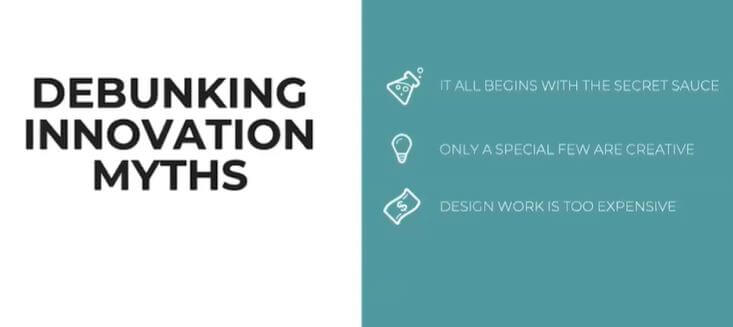
In her attempt to debunk the above-listed 3 innovation myths, Laura explains that no ‘secret sauce’ is required in the innovative process. According to her it all comes down to the people. Listening to people’s thoughts, emotions, behaviors and experiences, in her words, is the key factor in creating stories, marketing campaigns and websites.
Laura underlines the importance of thinking empathetically about clients in order to create effective marketing campaigns.
She also shares that at Chemistry they tend to organize these Idea Incubator marathons when within a short period of time they throw around ideas, just brainstorming without rushing into solutions right away. They believe that:
“Imagination is a team sport that everyone can play”
Data-Driven Content Marketing – Abhishek Grover, Samsung, Asia
Abhishek Grover is the Regional Digital Marketing Head of Samsung for South-East Asia and Oceania. He shares some great insights and examples on Content Marketing. Abhishek opens his presentation with solid advice on how to fine-tune your audience targeting and makes by far one of the top presentations for day 1 at the DMWF.
And while Creativity, in his words, is the factor that makes up for 47% of the marketing campaign effectiveness, it is still essential to account for audience precision and communication personalization.
Abhishek breaks down the process of how to effectively target individuals into the following major steps:
- Selecting the right product and the right message – would result in increased customer satisfaction;
- Multi-channel targeting – would result in higher Return on Ads Spent (ROAS);
- Message sequencing – would result in higher order value
The reason why Samsung’s digital marketing campaigns render such impressive results according to Abhishek, is because they focus on customer behavior both in terms of micro and macro moments:
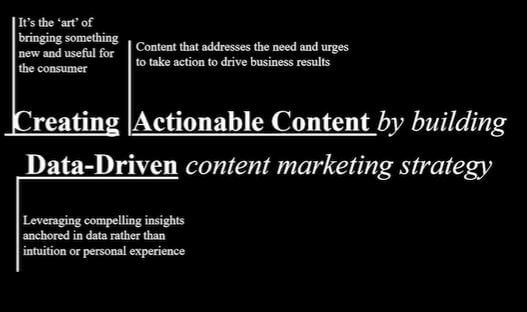
Abhishek also mentions 3 major misconceptions that online marketers easily fall for:
- They assume that creating data-driven content should be a race of drafting more and more content, while, in fact, less is better as long as the content is unique, exhaustive and mutually exclusive;
- Marketers deduce they should develop complex communication matrix, while they should aim at simplicity by breaking down the target segments when necessary. Making those prospect groups easily addressable and the marketing strategies – implementable in the selected channels is the right way to go according to Abhishek.
- And finally, the third misconception refers to the myth of the high costs that marketing campaigns require. Abhishek explains that once a marketer defines his specific needs by understanding the business relevance the costs reduce significantly.
Abhishek underlines that at Samsung they are not optimizing their campaigns based on marketing metrics but on hard core business metrics instead:
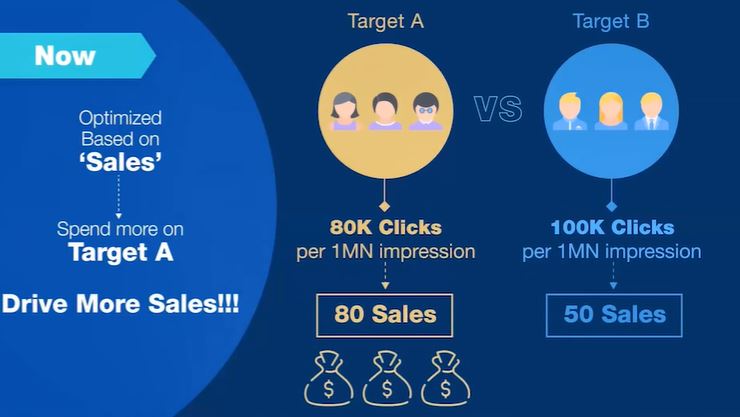
By letting their marketing strategy evolve they are now optimizing their targeting process based on sales instead of clicks.
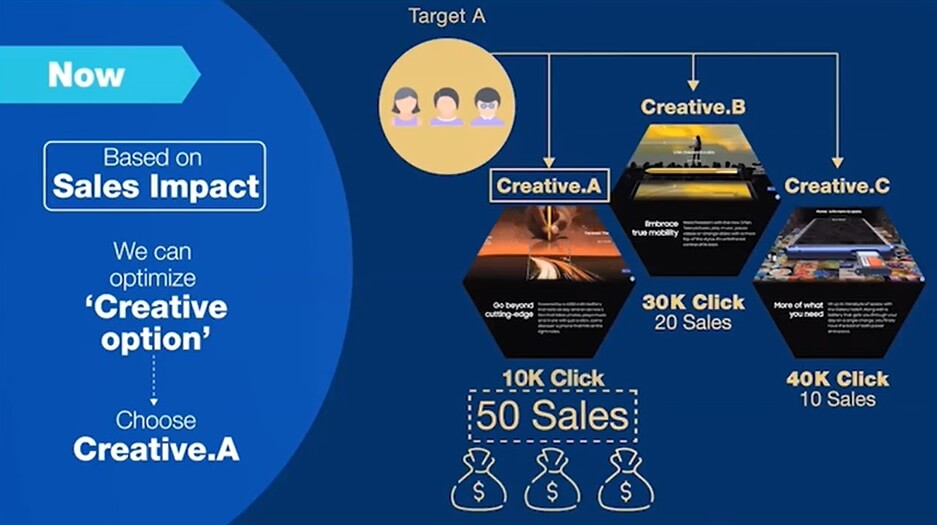
At Samsung they are now used to optimizing creatives based on sales instead of clicks.
Abhishek draws our attention to the fact that we as marketers should learn to adapt consciously in order to succeed helping our clients grow.
A perfect example of a marketing campaign that has adopted this notion in its creative is Ikea’s Retail Therapy project:
Every time an online-users types in Google a relationship problem they might have at home, an Ikea product pops up as a result (as a paid ad) – taking the online-user to a website that is similar to Ikea’s official company website, listing the same products but this time under names that reflect the specific problem the user searched for.

Instead of Frosta a plain stool gets renamed to “My husband falls asleep on the couch”
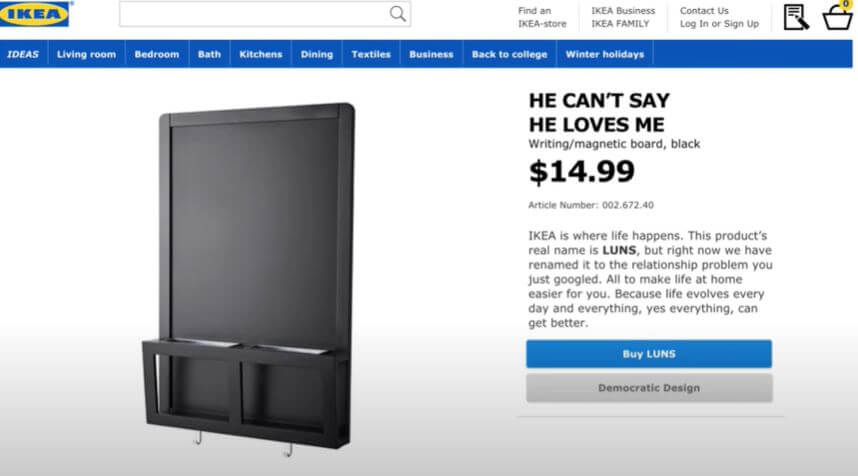
A black board becomes a “He can’t say he loves me” product, all in the name of drafting a creative data-driven marketing campaign.
Save from the adapt consciously advice, Abhishek has four more mantras to a successful data-driven marketing campaign to share with his audience:
- Listen curiously;
- Hack contextual relevance;
- Build personalization at scale;
- Relate to business goals.
Why Thoughtfulness Is the Key to Building Trust with Your Customers – Marisa Thomas, Bloom and Wild
Marisa Thomas is Head of Brand at Bloom and Wild. She gives a great talk on how to build a relationship of trust with your customers by actively listening and responding to their needs.
As a marketer at the UK’s top online florist Marisa shares her experience on the huge challenge they faced last year. 18,000 subscribers of their newsletter unsubscribed and that meant that they lost a massive amount of clients without even having a clue what the actual reason was.
At first they thought that the unsubscribed customers were turned off by their Mother Day’s campaign and more specifically – by the high number of emails sent during that period. Fortunately they did not rely on mere assumptions to draw into any final conclusions but they sent out a survey to actively seek for client’s feedback on the issue.
To their surprise it wasn’t the email frequency but the irrelevancy of the emails that alienated their clients from the brand.
Many of Bloom and Wild’s customers perceived those Mother Day’s reminders painful and they stopped listening to the company’s messages.
On the next year Bloom and Wild adopted a new Content Strategy for their Mother’s Day campaign. They sent out an opt-out email to their subscribers allowing them to choose whether they will receive mother-related information or not in their newsletters.
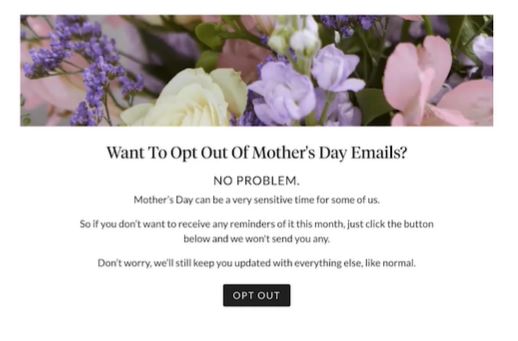
The newsletter frequency didn’t change but the content for the two client groups were different.
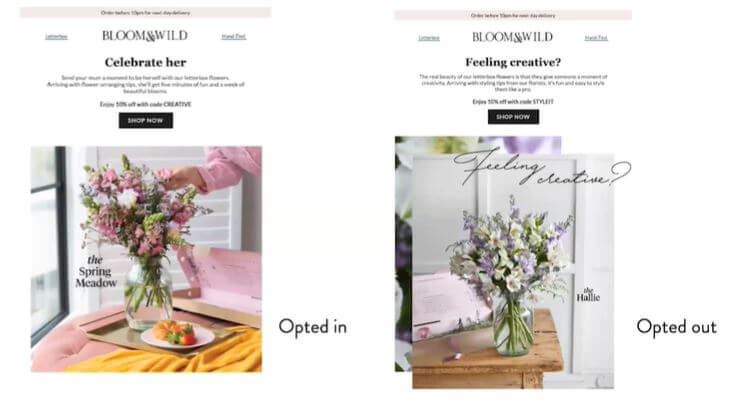
Their unconventional marketing approached resulted in a huge client’s response:
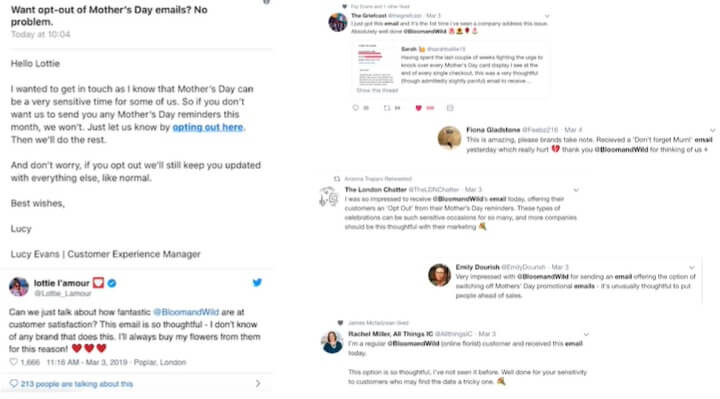
and media coverage:
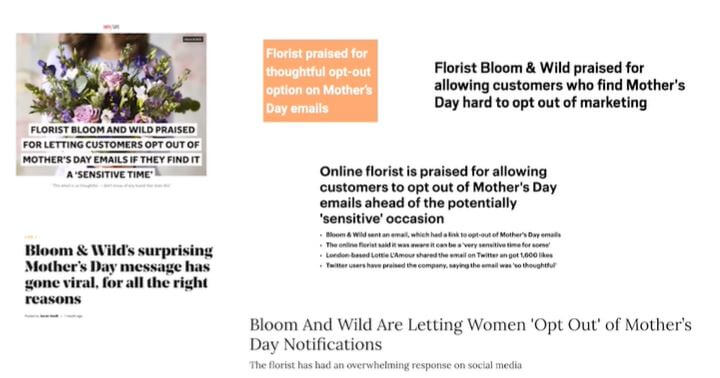
And they even got referenced in the House of Commons during a debate whether companies should actually offer an opt-out as a customer-oriented strategy.
Marisa explains that they had to rethink their whole communication strategy during March in terms of:
- Rewriting social calendars;
- Pushing notifications;
- Changing navigations on their websites;
- Transforming product descriptions on the site.
They ended up stripping the Mother’s Day campaign from its original message and talked about the favorite woman in their customers’ life instead:
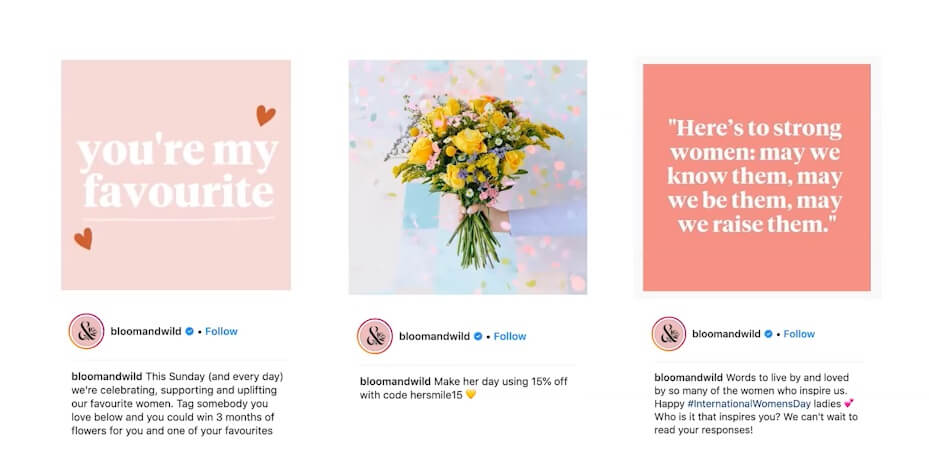
They’ve ended up replicating this strategy for other similar holidays as well, like Father’s Day, Valentine’s Day, Grandparent’s Day.
They took personalized ads to a whole new level.
Bloom and Wild even started a community called the #ThoughtfulMarketingMovement according to which there is three routes towards thoughtfulness:

“Being thoughtful is about building trust – trust won’t give instant results but will end up pushing retention and loyalty of your customers.”
User-Generated Video Marketing – Rachel King, editmate.com
The CEO and Creative Director of editme.com, Rachel King, explained why crowdsourcing video clips by your wider community could be so enticing in modern times.
She points out a few benefits of gathering non-professional videos as it comes to polishing your online marketing strategy:
- They are authentic, reliable and provide social proof;
- The lockdown has made everyone spend more time online, so this type of content allows for Immediate communication with the target audience;
- They help brands connect with customers, employees, brand ambassadors and fans all the time.
In Rachel words adapting user-generated videos into your marketing campaigns is:
“A fast, cost effective, socially-distant way to create video marketing content”
Brilliant examples of user-generated videos would include:
- Putting the customers into the spotlight – video clips of clients unboxing product, giving product reviews and company testimonials;
- Looking after the employees – organizing open discussions online on topics related to mental stress during the pandemic could really help your employees cope with their exieties, which will also improve their motivation, working process and project engagement;
- Promoting company values and authority – CEO interviews.
On the actual “HOW” we are to attract user-generated content Rachel answers with the following list of tactics:
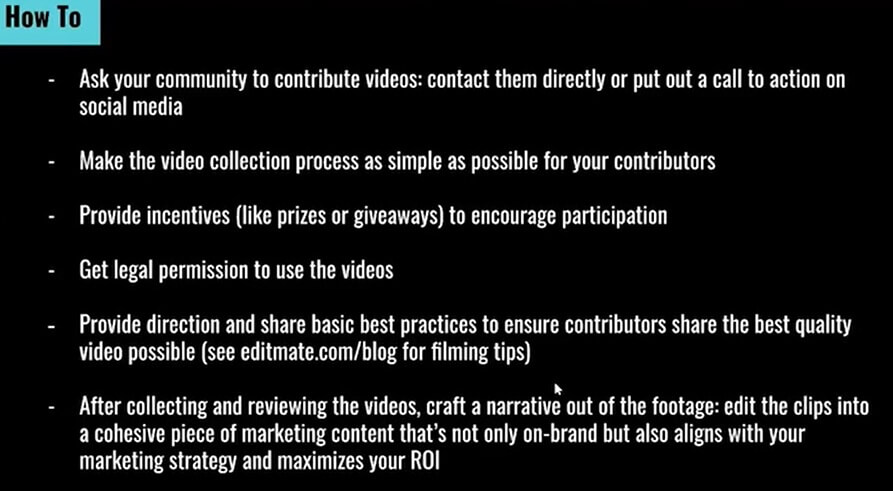
Meet Q, the World’s First Genderless Voice for AI – Emil Asmussen, Virtue& Vice Northern Europe
Emil, the Creative Director of Vice’s Virtue for Northern Europe was the one who came up with the idea to create a genderless voice for an AI assistant.
He explains that he was unsatisfied with the common misconception that personal assistants were seen as female sectaries. Alexa, Siri Cortana, Google Assistant all those projects were following this ‘false practice’ and were ‘speaking’ in woman’s voice.
Emil thought it was about time that this gender discrimination in the AI industry should be put to an end, especially when in Netherlands have already introduced gender-neutral passports.
According to recent survey, Emil stated that 41% of the generation Z identify themselves as neutral on the gender scale. So he was trying to make a point that there is a niche that Q was about to fill. After all the voice market in 2025 is believed to reach $31 billions – that is an opportunity worth taking.
As it comes to the project Q there are a number of interesting trivia to learn:
- The gender-neutral voice of Q was created as a blend and modulation of a number of ‘donated’ voices;
- There were 3 key principals the voice was drafted on:
- The Frequency – 145 Hz was the golden mean where the voice sounds clear of any male or female connotations. Just for reference: a masculine voice ranges around 80 Hz and the feminine one – around 220 Hz.
- The S & T sounds – again a middle ground had to be reached between the soft S&T’s in man’s speech as compared to the much stronger pronunciation of the letters in women’s talk.
- The Fotmant filter – refers to the vow pronunciation.
- Project partners turned out to be: Copenhagen Pride, Tech Ambassador of Denmark, Equal;
- Global art scene expressed desire to implement Q in their programs, including Art Institute Chicago, Philadephia Museum of Art, and The Design Museum.
One of the main goals of Q’s creators is to attract the attention of big tech companies. Their wishes came true to an extend given that Google and Lego showed interest in their gender-neutral AI voice.
Emil shares a heart-warming feedback he got from a 22-year old person on the Q’s release:
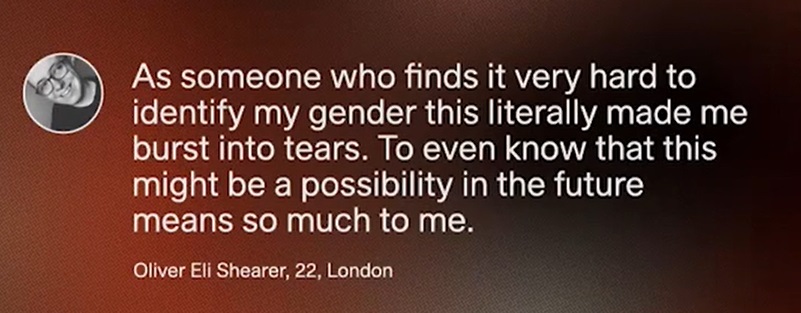
LIVE: How Do We Navigate the Nuances of Consumer Behavior in Unpredictable Times? – Taylor Dickson and Naomi Morrice, Brandwatch
Taylor and Naomi are Research Specialists at Brandwatch and did a great presentation on the importance of understanding consumer behavior via a combination of both structured and unstructured data.
While many businesses are satisfied by incorporating only unstructured data in their customer behavior research such as Social data (what is already available online as information about our target audience – including social media imprint like likes, comments, posts, etc.) this approach gives only a granular view of the issue.
In order to get a clear picture of what triggers the target customers’ engagement, satisfaction and motivation one is to invest in the more time-consuming, expensive, yet more revealing as it comes to actual customer attitudes and predispositions, surveys.
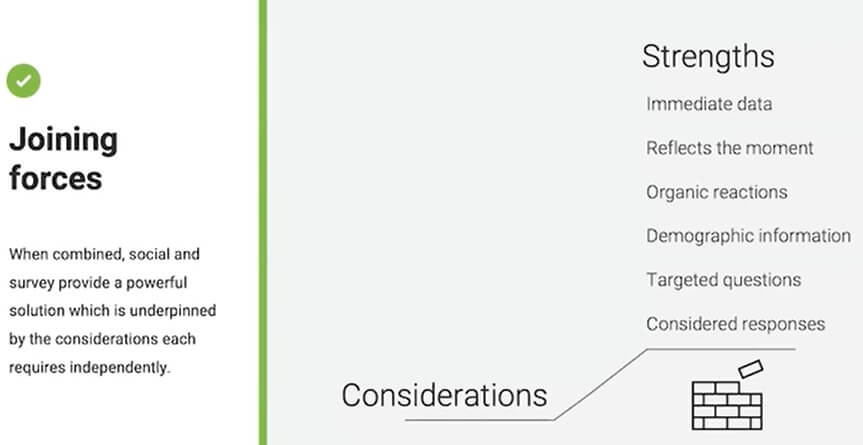
And as Taylor eloquently puts it:
“To be predictive, not reactive, we need to understand the source”
Revealing Invaluable Insights through Augmented Analytics – Gavin England, Adverity
Gavin is a Senior Product Marketing Manager at Adverity and his DMWF session was a fine Augmented Analytics walkthrough.
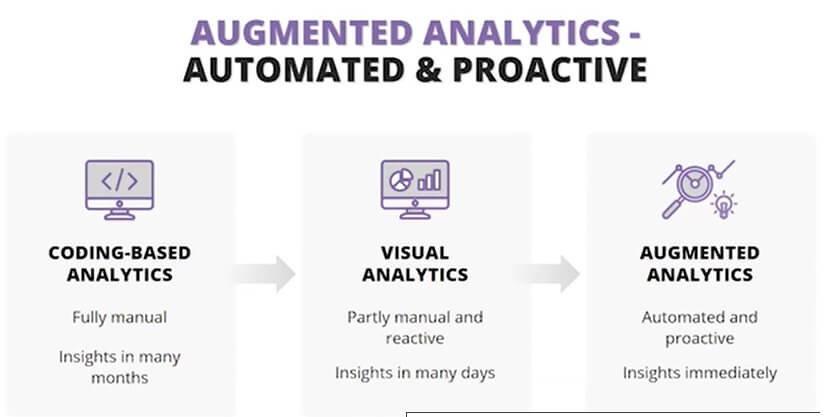
Gavin encourages marketers to introduce a transformation from the reactive towards the more proactive approach in their marketing strategies, or at least try to combine the two for better results.
One of the pillars of introducing such a process innovation is to start relying on machine learning technologies. Among the key benefits that Machine Learning technologies offers, in Gavin words, are the fact that they:
- Provide deep insight, which otherwise would often be missed and thus would maximize your ROI;
- Offer high level of automation, which results in quicker and effortless analytical process, accompanied by a reduced risk for your marketing activities;
- Decrease manual analysis effort;
- Proactively make recommendations for process optimizations.
The algorithms learn from historical data and adapt to quickly identifying deviations from the expected outlines such as rising trends. As Gavin puts it AI not always gives immediate solution, but rather attracts attention to what should be analyzed further.
Such examples would include:
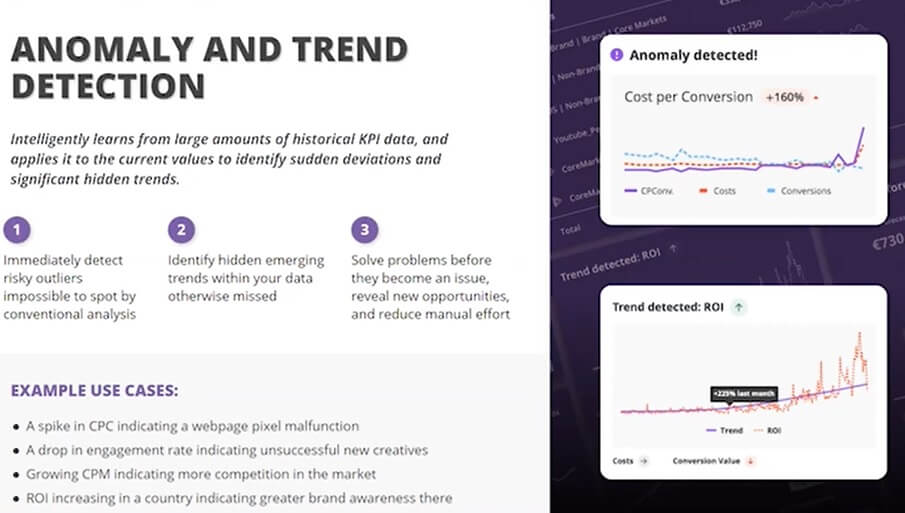
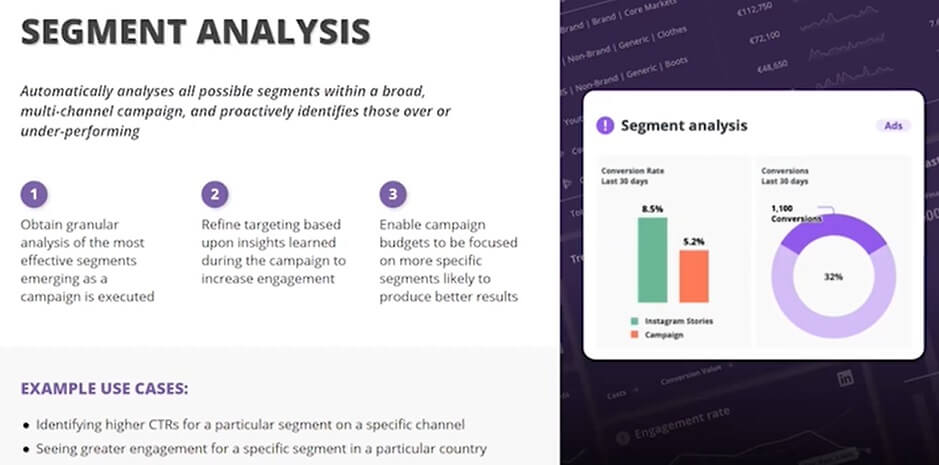
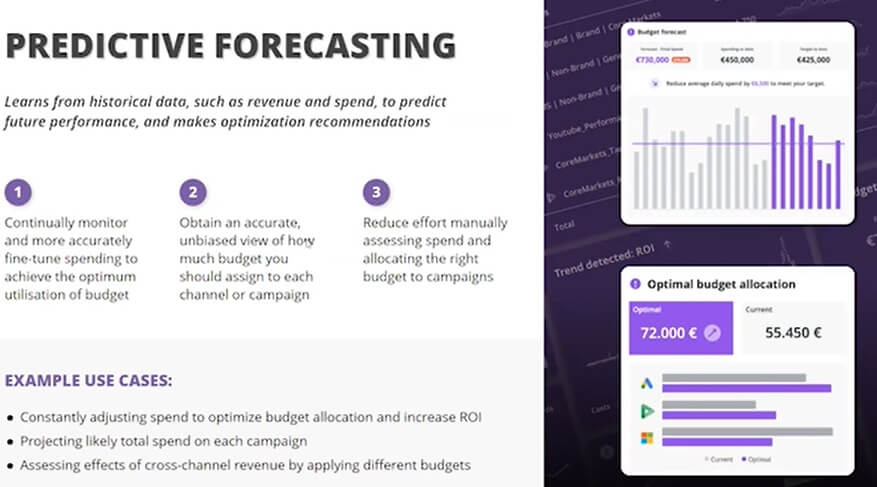
Social Media Intelligence: a Secret Weapon in Your Digital Marketing Strategy – Alina Hura,YouScan
Alina is the Marketing Manager at YouScan, a company focusing on visual analytics.
She draws our attention to the power of Social Media by pointing out the vast number of 3.96 billion social media users who could also be viewed as 3.96 billion potential sources of data.
And given that many of the user-generated posts are not only textual but are also visual it is essential for a brand to be able to track its ‘visual mentions’ as well, especially as it comes down to events.
There are a number of marketing decisions that could be made based on an event visual analysis like for instance what would be the best ad placement for the given company.
Alina explains that visual analysis helps brands:
- Understand buyer personas better. Thus marketers are able to create more precise campaigns.
- Create messages that meet the seasonal demand;
- Discover the most common consumption scenarios;
- Find influencers and ambassadors to target potential customers;
- Find local differentiators to penetrate new markets;
- Find visual UGC for company social media accounts;
- Get a constant product feedback;
- Build marketing campaigns on the most discussed advantage;
- Benchmark with competitors’ feedback;
- Get notified about emergency trends that need your attention.
TikTok for Brands – Getting Started – Anton Perrau, Tommy
Anton is a Senior Vice President at Tommy and sheds some light on their experience with TikTok campaigns.
As a video sharing platform preffered mainly by Millenials and Generation Z, TikTok is the modern video sharing platform that has one unique feature: its absolute addictiveness.
Thanks to masterfully created AI algorithm that drafts the content at the “For You” page the TikTok users are offered a list of relevant videos that are custom-tailored to their watching and engagement history.
Specific engagement metrics like:
- Completed views;
- Repeated views;
- Likes;
- Comments;
- Shares;
- Outside socials (links from Instagram, YouTUbe, Twitter).
Are the ones that help the TikTok algo rate and rank the user-generated videos.
Anton shares the top three principles of creating advertising campaigns at TikTok:
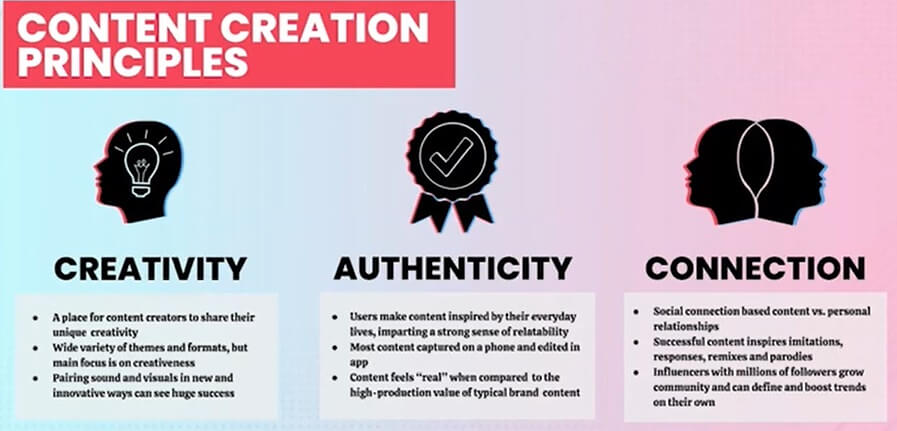
And he gives really nice examples for each one of those principles:
- Creative content on TikTok can take the shape of:
- Cosplay;
- Dance;
- DIY;
- Food;
- Travel;
- Visual Edits;
- Authentic content on TikTok can come as:
- Identity-driven;
- Lo-Fi Easthetic;
- Personal stories;
- Slice of life;
- Weird AF;
- Content on TikTok that boosts connection with the audience would be:
- Recycled sound;
- Duets;
- #Challenges;
- Influencers;
- Meme Formats.
As a true marketer Anton shares a special recipe for creating an effective TikTok campaign:
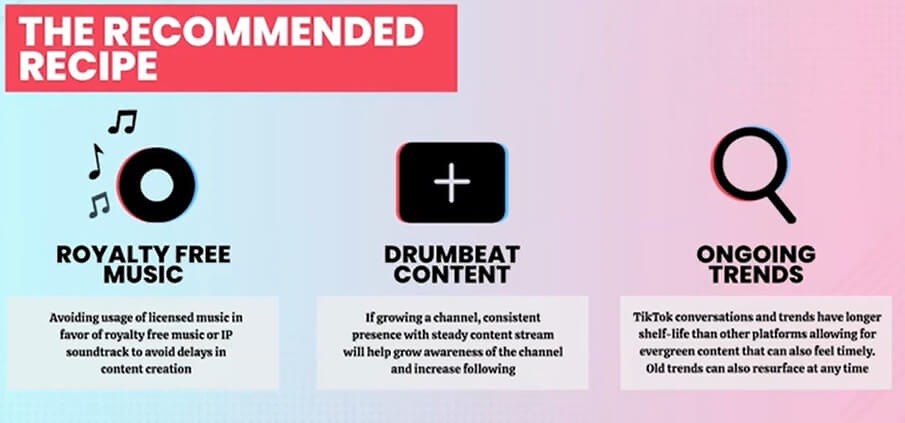
Message Makeover: Transform the Heart of Your Digital Marketing to Drive Growth – Jeffrey Pease, Message Mechanics
Jeffrey is a Brand Messaging Expert at Message Mechanics and his session is an absolute delight in terms of insights and creative ideas shared with the audience.
As Jeffrey puts it – the limitation of human attention is the main challenge that our message campaigns have to overcome.
In order to build up an engaging story we are to plan in advance the three main elements that could make it a memorable piece:
- Background (“once upon a time”)
- Dramatic conflict (“The big bad wolf”)
- Happy ending (“The lived happily ever after”)
If we translate this into a meaningful story sections we will have:
- A situation;
- A complication;
- A resolution.
“Why we need a story,” you’d ask. Jeffrey explains that stories reduce the stuff people have to hold in their heads, shaping those into cognitive chunks that are easy to remember and assimilate.
“Only because you have a story this doesn’t mean you have a good story (one that sells).”
In order to test your story whether it is a good one, i.e. whether it can sell your product or service, you should rate it on the following scale for being:
- Clear – do customers understand your story (this is the most neglected element);
- Compelling – do customers see what you offer as valuable (create a mindset: “I gotta have this thing”);
- Consistent – do customers see this message everywhere/throughout all channels you control.
The main challenge of creating a good story is to know where to cut your message. The less is more, as Jeffrey outlines – a good marketer should know how to structure its message and to distill a brand’s unique value to simple messages that sell.
His magic recipe towards accomplishing this task goes as follows:
- Use a single sentence as your positioning statement (no more than 10 words in total);
- Break it into 3 key messages;
- Prove each one of those three messages with 3 proof points.
The formula would look like that:
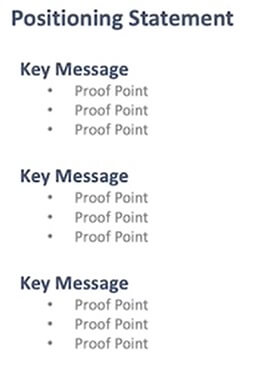
When creating the Positioning statement Jeffrey advises to stick to one thing only. You need one big differentiator or benefit. At that level you should not care if the target audience believes you or not. You simply need that they understand your message.
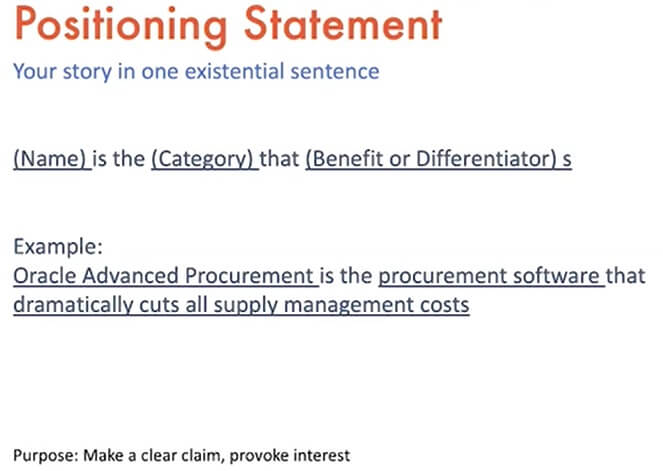
On the other and the purpose of the Key Messages is to support the Positioning Statement without drilling deeply into capabilities. The Key Messages let the customer rep select areas of interest.
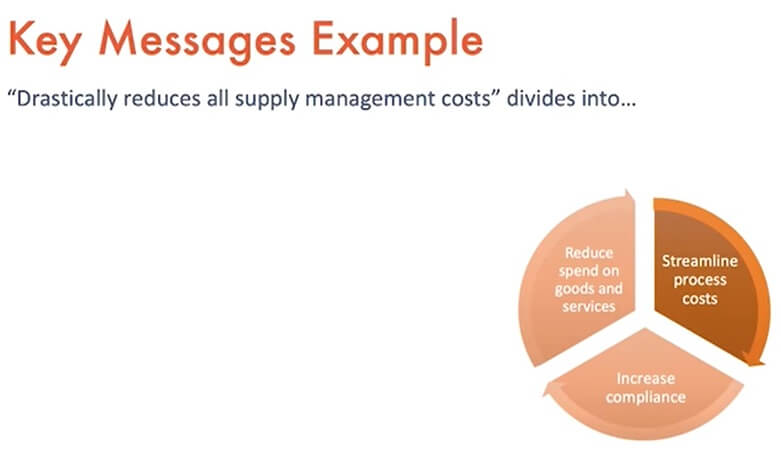
Once you’ve got your customer’s attention, he’d ask about supporting data on the key message(s) that is/are most relevant to his needs. It is only at this stage that you’d have to present your Proof Point(s).
Jeffrey strongly recommends against putting them first. You need to discuss those only when the customer is ready to hear them. Don’t get into the trap of Premature Differentiation that would be your number one mistake, Jeffrey warns.
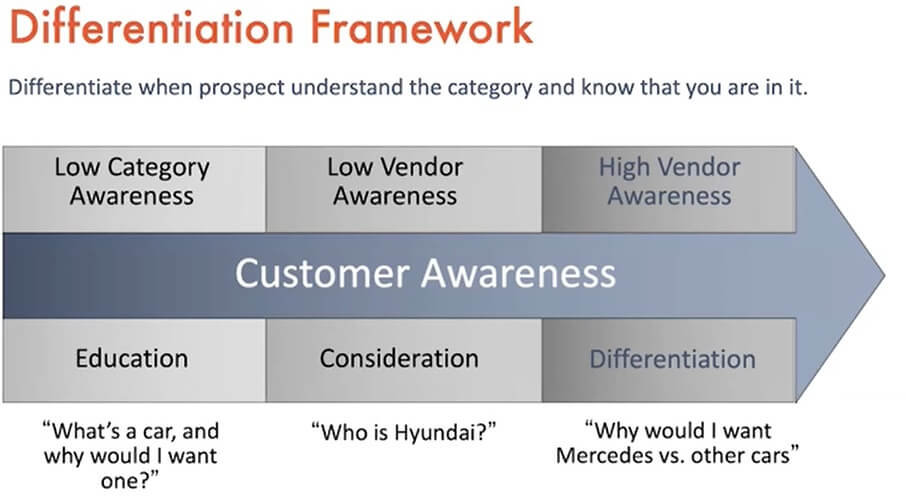
Differentiation is the only a viable option when you are operating in a mature market. Otherwise you should focus on educational differentiation instead. Remember: first your target customers have to want that product and then you are free to convince them that your variation of the product is the one they need.
Are You Ready for the Age of Agile – and Is It Do or Die? -Rachel Chapman, RBC Future Focus
Rachel Chapman is the Director of RBC Future Focus and in her session on Agile Marketing she gives us quite a comprehensive view on the term:
“Agile marketing is the coming together of customer-focused, collaborative teams, who have clear measurable goals, deliver many rapid iterations and small experiments, and use testing and data to make decisions.”
Among the core components of Agile Marketing Rachel lists:
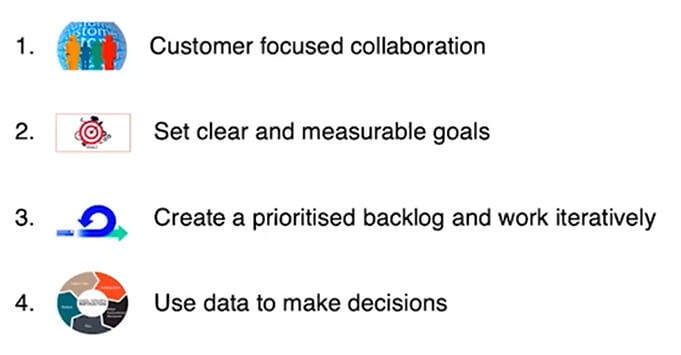
PR, Advertising and Marketing through the Lens of a Crisis – Nicole Hanratty, Bhang, Inc.
Nicole is Global Director of Marketing at Bhang, Inc and presents quite a fascinating idea of how a brand can stay relevant in the changing environment of the 2020 crisis.
Nicole’s main point in listing a vast amount of examples of companies that rebranded and repositioned them during the pandemic lies in the following:
“Meet a need and develop new revenue sources”
Supporting her claim with the famous saying: “Diamonds are made under pressure”, she insists on the importance of pivoting in time of crisis:
